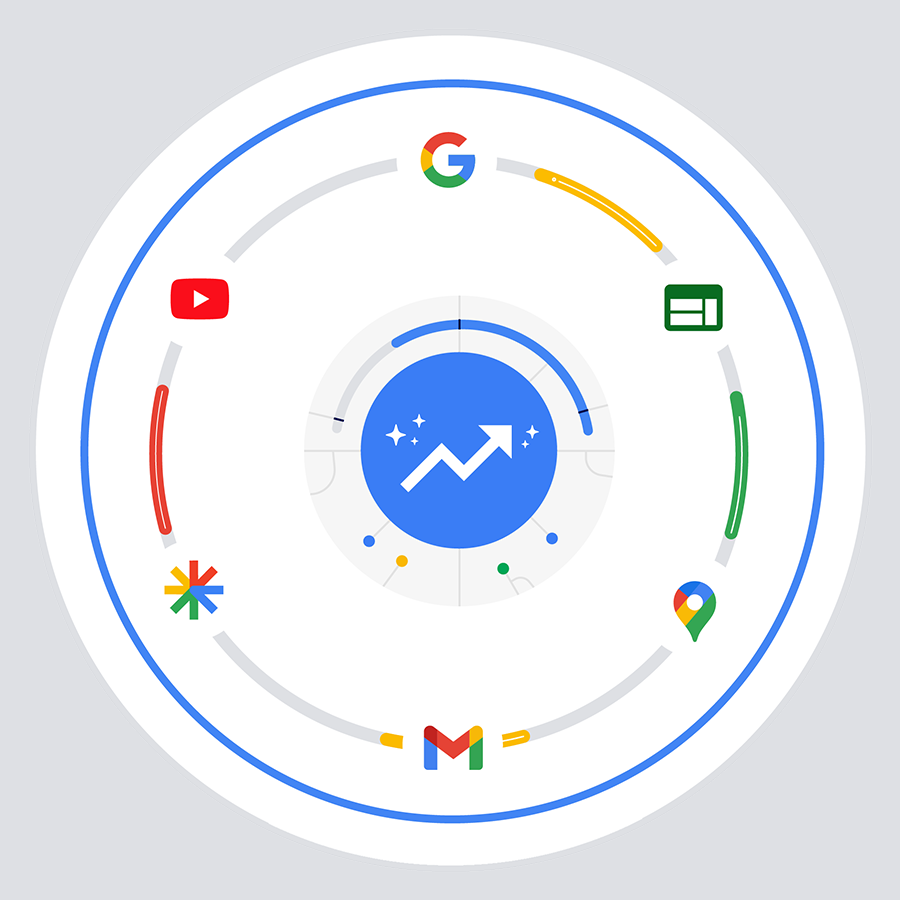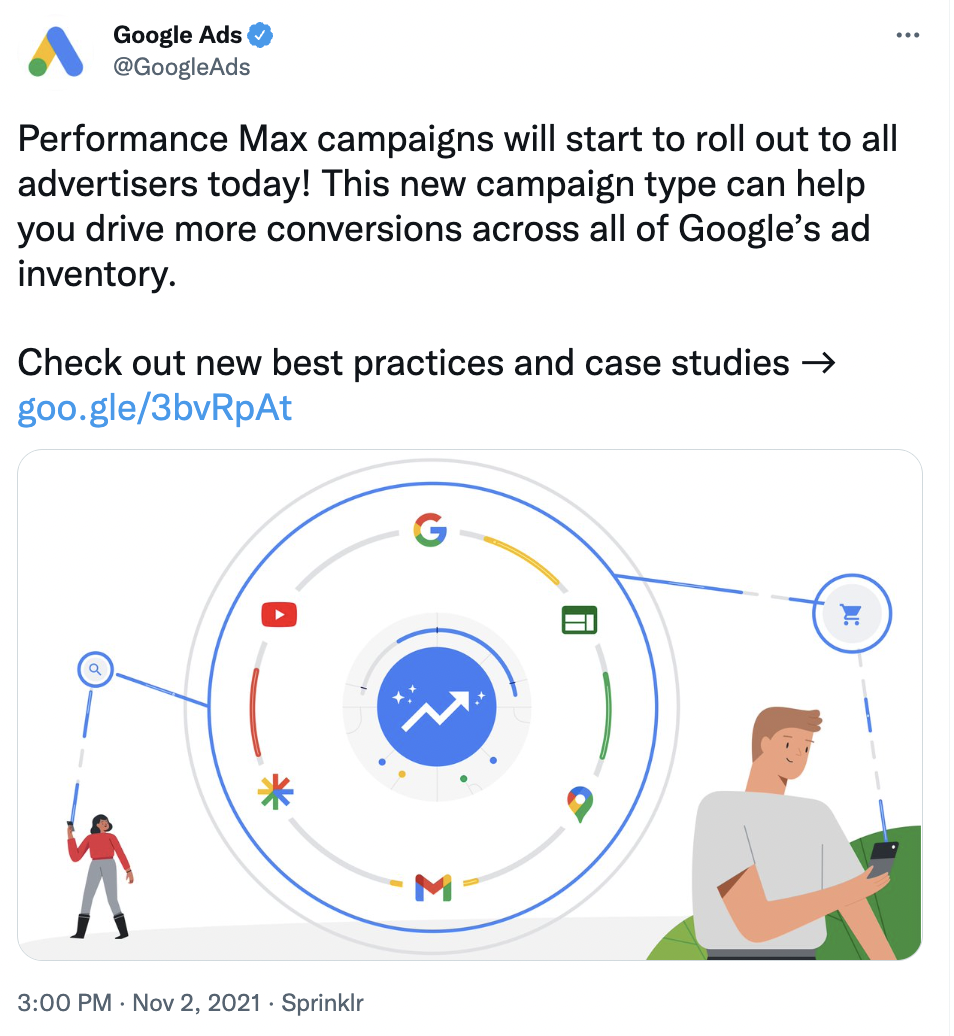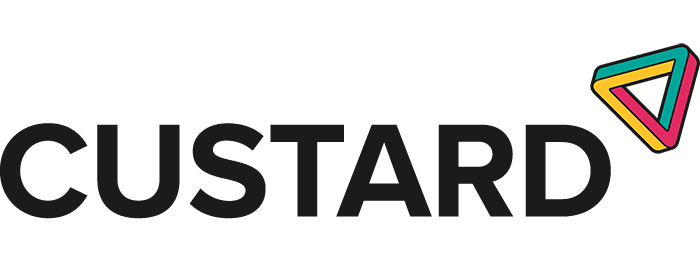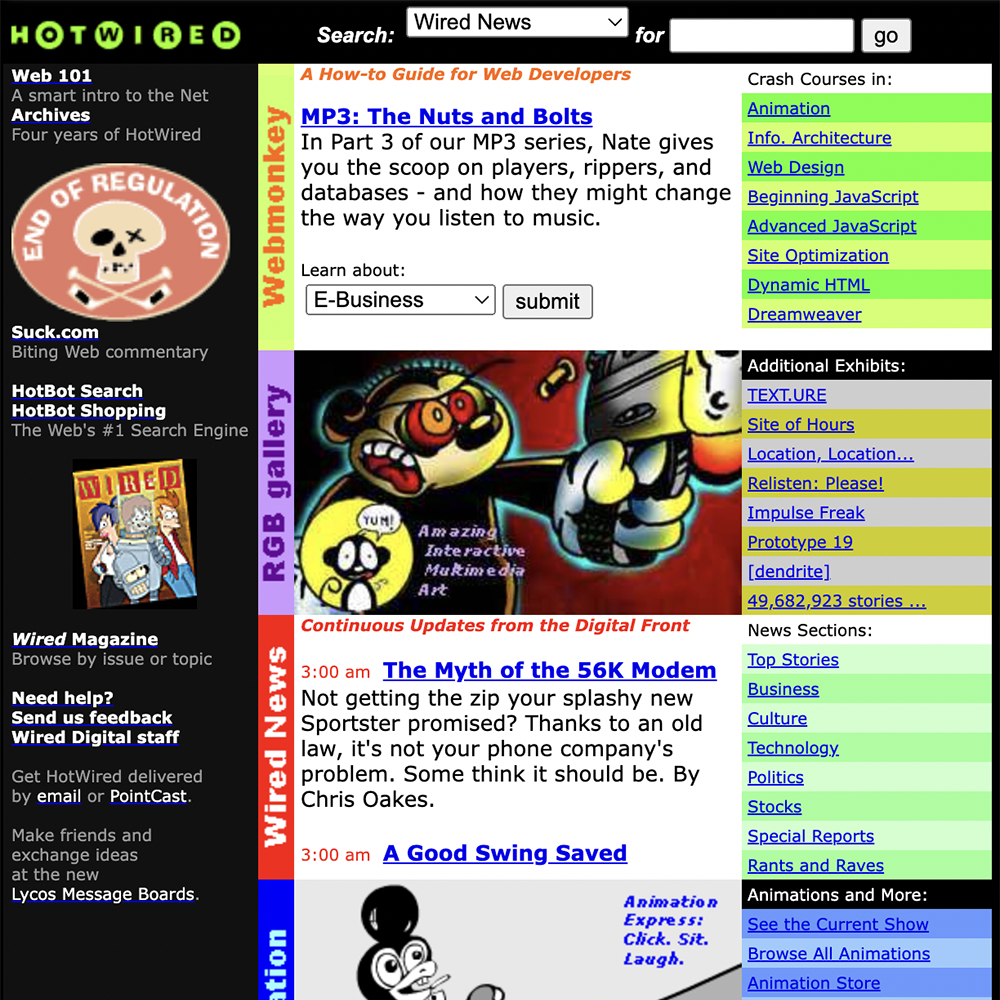
In early November 2021, Google Ads announced the full roll-out of Performance Max – a mysterious new product which differs significantly from existing formats.
The first half of 2022 has seen a steady stream of new features being added into the mix with no sign of stopping, signalling a clear intention on the part of Google to push advertisers to adopt Performance Max as a replacement for legacy formats.
However, 8 months on we’re finding that many Google Ads users are falling behind. The omnivorous nature of Performance Max has left some struggling to make the transition from discrete Paid Search, Display and Shopping campaigns.
In this article we give you everything you need to know about Performance Max, from the experts at our PPC agency Manchester.

Google announces full roll-out of Performance Max, Nov 2021 (view original Tweet)
Jumpstart Your Success
What Our Customers Say

“10/10 would recommend”

“A superb business to work with”

“A top rate agency”
What Is Performance Max?
Performance Max, also known as (Pmax or P Max) is the newest advertising format offered by Google. Google says:
Performance Max is a new goal-based campaign type that allows performance advertisers to access all of their Google Ads inventory from a single campaign. It’s designed to complement your keyword-based Search campaigns to help you find more converting customers across all of Google’s channels like YouTube, Display, Search, Discover, Gmail, and Maps
Source: https://support.google.com/google-ads/answer/10724817
Our take on Performance Max is that Google wants to encourage advertisers, by hook or by crook, to buy advertising space across the full inventory of Google products and services, and Performance Max is a way of making that happen.
The end game is likely to see advertisers far less able to cherry-pick the placements that convert the best for them, instead having to rely on a much more diverse range of formats, including those perceived as being ‘sub-prime’.
This will likely deliver ‘worse’ performance in pipeline metrics (e.g. increased impressions but lower click-through rates), but for those who stick with it there is unlimited potential for better bottom line KPIs (e.g. conversions, revenue, ROAS).
Performance Max makes heavy use of Google’s automation technologies and real-time bidding solutions meaning that it can leverage far more data than existing ad formats, which rely on more siloed input data.
It allows for campaigns to include a real mix of ad creatives and budget optimisations, bringing the best of Search, Shopping and Display under one roof, and (theoretically) making it simpler to optimise, report and reach new customers than with legacy formats.
When Should Performance Max Be Used?
Although Performance Max might retrospectively be viewed as a panacea, as of today it is certainly not a “be all and end all” campaign format. For mature accounts, our view is that it should be deployed as a supplementary campaign to help gather additional data on top of an existing account structure.
For virgin accounts with no prior data and plenty of “unknown unknowns”, Performance Max is a much more appealing prospect – a jumping-off point which can quickly lead to full immersion in the entire range of Google Ads formats without having to worry too much about understanding the detail of every feature and facet.
When considering whether you should go down the Performance Max route consider whether you have the desire (or even the time) to make granular optimisations on a day-to-day basis.
If not, Performance Max might be a better fit for you than traditional formats as it enormously simplifies BAU management tasks – taking care of budget allocation across the different available services, optimising bids to meet specific conversion goals set by you, and more.
However, the lack of granular control is likely to be a turn-off to seasoned Google Ads users, and where there are legacy campaigns running in parallel you must take care minimise cannibalisation.
Another consideration is that the automation features of Performance Max work better when fed on a data rich diet.
As a result, larger budgets – which can pay for more clicks – will deliver quicker and better optimisations than smaller budgets.
New Features
New features are coming thick and fast. The following three were recently announced by Google, which are set to enhance the Performance Max experience further, as well as making the imminent forced migration to Smart Shopping much smoother:

Customer Acquisition Goal
Although this feature is not new to Google Ads, it is new to Performance Max campaigns.
It allows advertisers to prioritise new customers over existing ones, which may be a better fit for certain marketing strategies.

Customer Interest Insights
Consumer Interest Insights show how your audience searches and engages with your business using the search terms which your ads have displayed during the past 56 days, providing a deeper understanding of what your target customers are searching for.

Upgrade Tool
Google will soon be rolling out a one-click upgrade tool ahead of Smart Shopping campaigns being replaced by Performance Max. Advertisers will be notified as this tool becomes available, after which it will be much quicker and easier to make the jump to Pmax.
Performance Max vs Smart Shopping
With Smart Shopping campaigns being phased out to make way for Performance Max, how will that affect your business moving forward?
Smart Shopping campaigns use the Google Search Network, Display Network, YouTube and Gmail. Pmax adds Discovery and Maps into the mix. This means your campaign casts a much wider net, giving you access to a significantly larger audience.
Performance Max allows for many more assets and ad copy when optimising creatives as opposed to Smart Shopping campaigns. This allows for richer content, giving Google more options for optimising ads, working out the best performing asset/creative ad combinations to convince potential customers to interact with your ads.
Performance Max takes priority over Display and legacy Shopping campaigns (including Smart Shopping). Where ad rank is higher it also takes priority over YouTube/Discovery campaigns and Search campaigns using broad/broad match modifier and phrase keywords.
Exact match keywords are the key to controlling Performance Max campaigns, as they take priority.
This is especially important to factor in when structuring an account post-Performance Max implementation. Have you included as many exact match keywords as you possibly can? Are your brand keywords protected against cannibalisation? Are there specific top performing search terms you want to ringfence from Performance Max?
Diminished transparency is another consideration when considering the move to Performance Max. As you may have experienced with Smart Shopping, the internal machinations of Google’s AI are something of a black box. The additional complexity and abstraction of Pmax only serves to make things opaquer.
To combat the lack of transparency, make full use of exact match keyword lists, rich ad creatives, highly-relevant customer segments, account-level exclusion lists. It’s also essential to keep a close eye on things – in order to assess impact and mitigate collateral damage, you must run regular reports not just on your new Performance Max setup, but on the account as a whole.
Establishing clear benchmarks and rules of thumb prior to migration is a very worthwhile endeavour.
Pros & Cons of using a Google Performance Max campaign
Google’s platform has made it more accessible for new users who are not well-versed in how to run Google Ads, especially after a beginner is exposed to the overwhelming number of options when entering the Google Ads platform for the first time.
This offers Google access to huge amounts of additional revenue from previously untapped advertisers.
So, do the Performance Max campaigns make an advertiser’s job easier? Let’s explore the pros and cons.
PROS OF PMAX
– Find more converting customers
Automated bidding across channels allows you to capture potential conversion opportunities in real time.
– Drive more value
By using Google’s real-time understanding of user intent and behaviour, you can expand your target market to new segments by appearing to them with less irrelevant advertisements.
– Acquire rich insights
Performance Max campaigns are now on the Insights page to help you understand more about the customers which have viewed and interacted on your ads, and which search intents are driving performance.
You can also use the Combinations report to set and observe the performance of high-performing assets.
– Ease of Use
Google makes the campaign easier for beginners. One campaign lets you accomplish all objectives without needing to create several campaigns.
A Performance Max campaign allows for easier reporting and optimisations, giving advertisers more time to focus on account strategy.
CONS OF PMAX
– Cannibalisation
Advertisers run the risk of Performance Max campaigns cannibalising from other campaigns. As there is a lack of negative keyword exclusions at campaign-level, it is easy for the campaign to cause overlaps in data. To combat this, keywords can be negatively matched at account level, and exact match keywords in existing search campaigns are prioritised over Performance Max campaigns. If for example you are running a brand campaign and wish for Performance Max to target non-brand terms exclusively, consider expanding the list of keywords within the brand search campaign to minimise cannibalisation.
– Performance black box
Performance Max is essentially a black box for reporting data at a granular level. You can give the campaign plenty of assets, audience signals, and conversion data, however reporting is allowed at campaign level, not ad group/keyword level.
– Lack of keyword visibility
SQRs (Search Query Reports) are a thing of the past when reporting on Performance Max campaigns.
This leads to a lack of awareness about which search queries deliver the best returns for your business. Low-intent, high-volume terms which may be damaging to performance are hidden from view, preventing you from building account-level negative keyword lists to protect against wasted spend.
The best way to prevent this from happening is to ensure your negative keyword list is well built out before you make the move to Performance Max, and your ad creatives and Shopping feed (if you’re product focused) is optimised to include as much rich data as possible.
Standard Shopping vs. Smart Shopping
Standard Shopping campaigns are the traditional type of Shopping campaigns that allow businesses to promote their products by showing product images, prices, and other details to potential customers in Google search results, Google Shopping, and other partner sites. These campaigns are managed and optimised manually by the advertiser.
Smart Shopping campaigns (now Performance Max), on the other hand, are a more advanced type of Shopping campaign that uses machine learning algorithms to automatically optimise bids, targeting, and ad placements for best performance. These campaigns allow businesses to promote their products across Google’s networks, including Search, Shopping, Gmail, YouTube, and the Display Network. Smart Shopping campaigns also use dynamic remarketing, which allows businesses to show targeted ads to people who have previously shown interest in their products or website.
In summary, Smart Shopping campaigns use automation and machine learning to optimise and manage campaigns, while Standard Shopping campaigns are managed and optimised manually.
If you are struggling to decide which campaign type is best for your business goals when utilising shopping, see the below pros and cons regarding Standard Shopping vs Smart Shopping:
Pros & Cons of Standard Shopping
PROS OF STANDARD SHOPPING
– Greater control
With standard shopping campaigns, you have more control over targeting, ad placements, and bids, allowing you to make more fine-tuned adjustments to your campaigns.
– Better reporting
Standard shopping campaigns provide more detailed reporting, allowing you to see how specific products and targeting options are performing.
– Campaign structure
Standard shopping campaigns have a clear and defined campaign structure, making it easy to understand how your products and targeting options are performing.
CONS OF STANDARD SHOPPING
– Time-consuming
Standard shopping campaigns require more time and effort to set up, manage, and optimise.
– Requires expertise
Standard shopping campaigns require a good understanding of the platform, targeting options, and performance metrics to be set up and managed effectively.
– Limited automation
Standard shopping campaigns have limited automation capabilities, so you need to monitor and optimise manually.
In summary, Standard Shopping campaigns give you more control over your campaigns and better reporting, but they require more time and expertise to set up and manage.
Pros & Cons of Smart Shopping
PROS OF SMART SHOPPING
– Automation
Smart Shopping campaigns use machine learning algorithms to automatically optimise bids, targeting, and ad placements for best performance, which saves time and effort.
– Dynamic remarketing
Smart Shopping campaigns use dynamic remarketing, which allows businesses to show targeted ads to people who have previously shown interest in their products or website.
– Reach
Smart Shopping campaigns allow you to reach a wider audience by promoting products across Google’s networks, including Search, Shopping, Gmail, YouTube, and the Display Network.
CONS OF SMART SHOPPING
– Time-consuming
Standard shopping campaigns require more time and effort to set up, manage, and optimise.
– Requires expertise
Standard shopping campaigns require a good understanding of the platform, targeting options, and performance metrics to be set up and managed effectively.
– Limited automation
Standard shopping campaigns have limited automation capabilities, so you need to monitor and optimise manually.
In summary, Smart Shopping campaigns offer automation, dynamic remarketing, and a wider reach, but they have limited control and less detailed reporting. It requires to trust the algorithm and its decision making.
Review the pros and cons across both campaign types and decide which falls in line with your business goals before implementing.
How can you drive results?
Before implementing a Performance Max campaign, ask yourself what is the purpose of the campaign? Are you looking to drive sales or leads? Only when you define a clear strategy for the campaign should you then embark on the journey to creating a Performance Max campaign.
By using a sales-driven approach, advertisers can utilise “maximise conversion value” bidding, and implement a target ROAS (Return On Ad Spend). Lead generation strategies can also be enhanced by implementing target CPA (Cost Per Acquistion) bidding.
Performance Max also allows you to gain new customers for your campaigns via the Customer Acquisition Goal feature. You can optimise the campaign to bid higher for new customers or optimise to exclusively target new customers. This allows the campaign to prioritise growth, as opposed to Smart Shopping campaigns which may prioritise remarketing over new acquisition.
Conclusion
Be sure to have the proper checks and balances in place before giving Performance Max a try, and you’ll be far more likely to achieve a desirable outcome. With clearly defined goals and judicious use of historic data, Performance Max offers serious upside potential.
Push your budget, be brave, allow time for the campaign to learn and optimise – and moving to Performance Max might just be one of your best ideas yet.
Still none-the-wiser? We can help! Contact us today to help your business leverage the power of Performance Max.

Frequently Asked Questions
Where do Performance Max ads show?
Theoretically, Performance Max ads can be served across any of Google’s vast catalogue of services. In terms of the type of targeting you might expect based on your experience with Google Ads, that includes Search, Display, YouTube, Gmail, Discovery, and Maps under one roof.
Can you use negative keywords in Performance Max campaigns?
Unfortunately, you are unable to review search queries at campaign-level with Performance Max. However, by making use of account-wide negative keyword lists (found in account shared library section), you can prevent terms from appearing across all campaigns, including Performance Max.
What is the difference between Smart Shopping vs. Performance Max?
Performance Max covers all of Google’s services, giving Performance Max campaigns maximum audience reach and visibility. By contrast, Smart Shopping only covers Search, Display, YouTube, and Gmail – importantly, it does not cover Discovery and Maps.
Discovery vs. Performance Max – which is best?
Discovery is best used as a tool to drive brand/product awareness to potential customers, as well as performing as a remarketing tool to past visitors and converters. Performance Max can also do this with the added benefit of utilising product feeds to help drive sales, something which Discovery cannot do. Performance Max is a great choice for advertisers who are not only looking to increase awareness, but to drive sales at the same time





